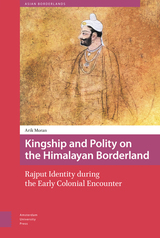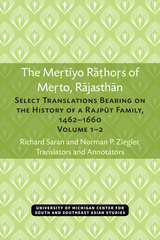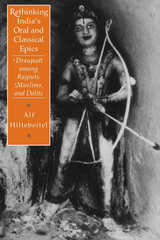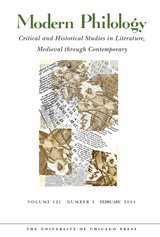3 books about Rajput (Indic people)

Kingship and Polity on the Himalayan Borderland
Rajput Identity during the Early Colonial Encounter
Arik Moran
Amsterdam University Press, 2019
Kingship and Polity on the Himalayan Borderland explores the modern transformation of state and society in the Indian Himalaya. Centred on three Rajput led-kingdoms during the transition to British rule (c. 1790-1840) and their interconnected histories, it demonstrates how border making practices engendered a modern reading of ‘tradition’ that informs communal identities to this day. Countering the common depiction of these states as all-male, caste-exclusive entities, it reveals the strong familial base of Rajput polity, wherein women — and regent queens in particular — played a key role alongside numerous non-Rajput groups. Drawing on rich archival records, rarely examined local histories, and nearly two decades of ethnographic research, it offers an alternative to the popular and scholarly discourses that developed with the rise of colonial knowledge. The analysis exposes the cardinal contribution of borderland spaces to the fabrication of group identities. This book will interest historians and anthropologists of South Asia and of the Himalaya, as well as scholars working on postcolonialism, gender, and historiography.
[more]

The Mertiyo Rathors of Merto, Rajasthan
Select Translations Bearing on the History of a Rajput Family, 1462–1660, Volumes 1–2
Richard Saran and Norman P. Ziegler, translators and annotators
University of Michigan Press, 2001
The Meṛtīyo Rāṭhoṛs of Meṛto, Rājasthān is a treasure for scholars of Rajpūt history. Richard D. Saran and Norman P. Ziegler, whose contributions to Rajpūt studies are well known to specialists in the field, have given us a work of deep and exacting scholarship. It is the culmination of decades devoted to the study of Middle Marwari chronicles from Rājasthān. The sources translated here provide access to the fortunes of a branch of the Jodhpur royal family, and in doing so they illuminate the larger world of Rajpūts in the middle period.
The Meṛtīyo Rāṭhoṛs are significant for several reasons. Their story traces the emergence of a Rajpūt brotherhood into local prominence and follows the establishment of their kingdom on the eastern edge of Mārvāṛ as a defined territorial unit. The evolution of the Meṛtīyos as a brotherhood passed through several clearly defined stages, including a relationship with the house of Jodhpur that ranged from mutual support among brothers to hostility and clear separation. A study of the Meṛtīyos in this context provides a unique view of the formation of a strong and indpenedent Rajpūt cadet line, of the establishment and defense of a local territory, and of the internal relations among Rajpūt brotherhoods regarding issues of precedence, honor, patronage, and service.
The translations are accompanied by an extensive explanatory apparatus taking various forms, which includes a valuable essay on Rajput social organization, complete genealogies, and biographies of all the major personages of the chronicles.
[more]

Rethinking India's Oral and Classical Epics
Draupadi among Rajputs, Muslims, and Dalits
Alf Hiltebeitel
University of Chicago Press, 1999
Throughout India and Southeast Asia, ancient classical epics—the Mahabharata and the Ramayana—continue to exert considerable cultural influence. Rethinking India's Oral and Classical Epics offers an unprecedented exploration into South Asia's regional epic traditions.
Using his own fieldwork as a starting point, Alf Hiltebeitel analyzes how the oral tradition of the south Indian cult of the goddess Draupadi and five regional martial oral epics compare with one another and tie in with the Sanskrit epics. Drawing on literary theory and cultural studies, he reveals the shared subtexts of the Draupadi cult Mahabharata and the five oral epics, and shows how the traditional plots are twisted and classical characters reshaped to reflect local history and religion. In doing so, Hiltebeitel sheds new light on the intertwining oral traditions of medieval Rajput military culture, Dalits ("former Untouchables"), and Muslims.
Breathtaking in scope, this work is indispensable for those seeking a deeper understanding of South Asia's Hindu and Muslim traditions.
This work is the third volume in Hiltebeitel's study of the Draupadi cult. Other volumes include Mythologies: From Gingee to Kuruksetra (Volume One), On Hindu Ritual and the Goddess (Volume Two), and Rethinking the Mahabharata (Volume Four).
Using his own fieldwork as a starting point, Alf Hiltebeitel analyzes how the oral tradition of the south Indian cult of the goddess Draupadi and five regional martial oral epics compare with one another and tie in with the Sanskrit epics. Drawing on literary theory and cultural studies, he reveals the shared subtexts of the Draupadi cult Mahabharata and the five oral epics, and shows how the traditional plots are twisted and classical characters reshaped to reflect local history and religion. In doing so, Hiltebeitel sheds new light on the intertwining oral traditions of medieval Rajput military culture, Dalits ("former Untouchables"), and Muslims.
Breathtaking in scope, this work is indispensable for those seeking a deeper understanding of South Asia's Hindu and Muslim traditions.
This work is the third volume in Hiltebeitel's study of the Draupadi cult. Other volumes include Mythologies: From Gingee to Kuruksetra (Volume One), On Hindu Ritual and the Goddess (Volume Two), and Rethinking the Mahabharata (Volume Four).
[more]
READERS
Browse our collection.
PUBLISHERS
See BiblioVault's publisher services.
STUDENT SERVICES
Files for college accessibility offices.
UChicago Accessibility Resources
home | accessibility | search | about | contact us
BiblioVault ® 2001 - 2024
The University of Chicago Press









